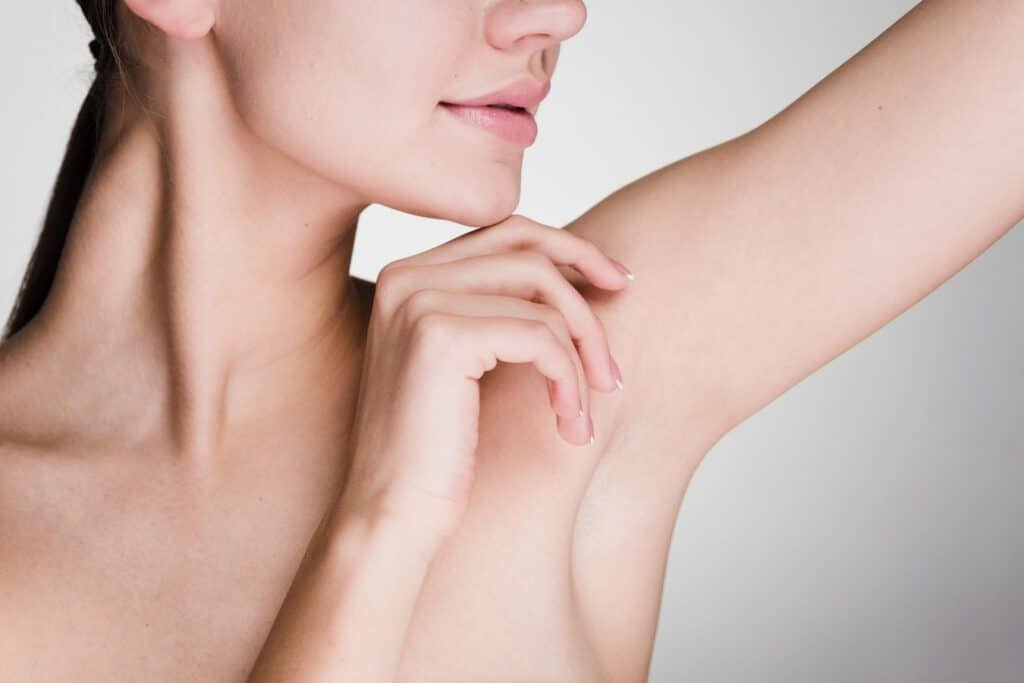Elevate Your Comfort: Tailoring Hyperhidrosis Treatments to Your Unique Needs
Hyperhidrosis is a condition characterized by excessive sweating, affecting millions worldwide. This medical issue can significantly impact an individual’s quality of life, leading to social anxiety and discomfort in daily activities. Despite its prevalence, hyperhidrosis often remains underdiagnosed, leaving many to deal with its effects without proper support or treatment options. Advances in medical science have brought about various effective treatments for managing this condition, offering hope and relief to those affected. By exploring the causes, symptoms, and available treatments for hyperhidrosis, individuals can take informed steps towards improving their well-being.
Understanding Hyperhidrosis and Its Impact
Daily Activities
Hyperhidrosis makes everyday tasks challenging. People sweat excessively, even in cool environments or without physical exertion. This can affect how they handle paper, electronic devices, and tools.
Clothing choices become limited. Individuals often opt for dark or loose-fitting clothes to hide sweat marks. Social interactions also suffer as anxiety about sweating leads to avoiding handshakes or close contact.
Health Effects
The condition goes beyond skin-deep issues. It may cause skin problems like infections or rashes due to constant moisture. Footwear becomes a concern too, with an increased risk of fungal infections.
Hyperhidrosis demands careful hygiene practices which can be time-consuming and mentally exhausting. The need for frequent showers and changing clothes adds stress to daily routines.
Psychological Well-being
Hyperhidrosis significantly impacts mental health. Constant worry about body odor and visible sweat stains lowers self-esteem and confidence.
This condition often triggers social anxiety and depression as sufferers withdraw from activities they once enjoyed. They might avoid sports, public speaking, or any situation that could spotlight their sweating issue.
- Pros of understanding hyperhidrosis:
- Better empathy towards those affected
- Increased awareness leading to early diagnosis
- Cons:
- Potential overemphasis on the negatives impacting mental health further
Understanding hyperhidrosis is crucial not just for managing symptoms but also for supporting those living with it emotionally and socially.
Types and Symptoms of Hyperhidrosis
Primary Hyperhidrosis
Primary hyperhidrosis usually shows up early in life. Many people start noticing it during their childhood or teenage years. This type isn’t caused by another health condition. It’s a standalone issue.
People with primary hyperhidrosis sweat more than usual. They might find themselves sweating even when it’s cool or they’re at rest. The sweating often happens on specific parts of the body like palms, feet, underarms, or face.
Secondary Hyperhidrosis
Secondary hyperhidrosis has a different root cause. It comes from an underlying health problem or medication side effects. Conditions like diabetes, thyroid issues, and certain infections can trigger it.
Unlike primary hyperhidrosis, this type can cause excessive sweating all over the body. People might experience sudden episodes of heavy sweating day or night.
Common Symptoms
Both types share some symptoms that are hard to miss.
- Visible beads of sweat appear even without physical exertion.
- Clothes often get wet due to excessive sweating.
- Social and professional interactions become challenging because of visible sweat marks.
These symptoms can vary widely among individuals but significantly impact daily life and self-esteem.
Causes and Triggers of Excessive Sweating
Genetic Factors
Hyperhidrosis often runs in families. This suggests that genetic factors are at play, especially in primary hyperhidrosis. People with this condition might notice other family members who sweat excessively too.
The link between genetics and sweating is not fully understood yet. However, it’s clear that some people are born with a tendency to sweat more than others. Their bodies react intensely to normal triggers like heat or emotions due to their genetic makeup.
External Triggers
Many external factors can trigger excessive sweating in individuals with hyperhidrosis. These include:
- Stress: It activates the body’s fight or flight response, increasing sweat production.
- Heat: Hot weather can make sweating worse for everyone, but it’s particularly challenging for those with hyperhidrosis.
- Certain foods: Spicy foods, caffeine, and alcohol may trigger episodes of excessive sweating.
Understanding these triggers is crucial for managing symptoms effectively. Avoiding them when possible can help reduce the frequency of excessive sweating episodes.
Medical Conditions
Secondary hyperhidrosis has an obvious cause, unlike primary hyperhidrosis which does not. It’s often a symptom of another medical condition or a side effect of medications. Conditions that might cause secondary hyperhidrosis include:
- Thyroid problems
- Diabetes
- Infections
- Certain cancers
Medications such as antidepressants can also lead to increased sweating. The role of the sympathetic nerve in regulating body temperature means any health issues affecting this nerve could contribute to symptoms.
Diagnosing Hyperhidrosis Through Sweat Tests
Minor’s Test
Minor’s iodine-starch test is a primary tool for visualizing excessive sweating. A doctor applies an iodine solution to the sweaty area, like underarms or palms. Then, starch is sprinkled over it. Areas with much sweat turn dark blue.
This test shows not just how much you sweat but also where it happens most. It’s especially useful for pinpointing areas like armpits and hands.
Thermoregulatory Test
The thermoregulatory sweat test maps out sweating patterns across the body using a special powder that changes color when wet. Patients sit in a controlled environment that encourages sweating all over the body.
This comprehensive approach helps understand abnormal sweat distribution and intensity on different parts of the body, such as underarms and palms.
Blood Tests
Blood tests can uncover conditions causing secondary hyperhidrosis by checking for abnormalities in hormone levels or infections. They look into factors beyond nerve signals controlling sweat glands.
These tests are crucial because they help rule out other health issues linked to excessive sweating, such as thyroid problems or diabetes.
Lifestyle and Behavioral Management Strategies
Wearable Choices
Choosing the right clothes can make a big difference. Breathable fabrics such as cotton, linen, and moisture-wicking materials help reduce skin irritation. They allow air to circulate better around your body, keeping you cooler.
Wearing light colors and loose-fitting clothing also helps. Dark colors absorb more heat, and tight clothes restrict airflow, increasing discomfort.
Antiperspirant Use
Regular use of antiperspirants containing aluminum chloride is effective for many people in managing hyperhidrosis symptoms. These products work by temporarily blocking sweat ducts.
It’s best to apply antiperspirants at night before bed. This gives them time to work while you sleep. For optimal results, ensure the skin is dry before application.
Trigger Avoidance
Understanding what triggers your sweating episodes can be key to control. Common triggers include spicy food, caffeine, alcohol, and stress.
- To minimize episodes:
- Notice what foods or drinks cause you to sweat more.
- Try relaxation techniques like deep breathing or yoga to manage stress.
Making these lifestyle changes can significantly improve quality of life for those dealing with hyperhidrosis. However, it’s important to consult a health care provider for personalized advice and treatment options beyond home management strategies.
Non-Surgical Treatments for Hyperhidrosis
Prescription Antiperspirants
Prescription antiperspirants are stronger than regular ones. They contain aluminum chloride. This ingredient targets sweat glands directly, reducing sweating.
Doctors often recommend them for severe cases of hyperhidrosis. Patients apply these at night to affected areas. It’s a simple first step before trying other treatments.
Iontophoresis Sessions
Iontophoresis involves water and an electric current. The process is straightforward but effective.
Patients immerse their hands or feet in water trays during treatment sessions. A device then sends a mild electric current through the water, targeting sweat glands without causing harm to the skin.
This method requires multiple sessions to see significant results. However, it’s a favored option for those with palmoplantar hyperhidrosis (sweating of the hands and feet).
Botox Injections
Botox injections temporarily block nerves that trigger sweating.
The procedure involves injecting small amounts of Botox into the affected area—usually underarm, hands, or feet—where excessive sweating occurs.
Results from Botox can last up to six months or more, making it an attractive option for long-term relief from symptoms of hyperhidrosis.
Surgical Options for Lasting Relief
ETS Procedure
Endoscopic thoracic sympathectomy (ETS) is a surgical method that targets the nerves responsible for excessive sweating. A surgeon performs this procedure to cut or clamp these nerves, providing relief to patients.
This treatment is often considered when other methods fail. It’s especially useful in severe cases of hyperhidrosis. Patients can expect significant reduction in sweating post-surgery but should discuss potential side effects with their surgeon.
MiraDry Treatment
MiraDry uses microwave technology to eliminate sweat glands in the underarm area. This non-invasive procedure provides a lasting solution for those struggling with underarm hyperhidrosis.

Patients typically undergo one or two treatments, depending on severity. The process involves minimal pain and has a quick recovery time, making it an appealing option for many seeking relief from excessive underarm sweating.
Sweat Gland Removal
For targeted areas like the underarms, sweat gland removal or liposuction offers another surgical solution. This procedure directly removes or destroys sweat glands in problem areas.
It’s suitable for patients looking for localized treatment options. Recovery times vary, and discussing expectations with a surgeon is crucial before proceeding.
Coping with Emotional and Social Effects
Support Groups
Support groups are vital for people dealing with hyperhidrosis. They offer a sense of community. Members understand the challenges you face. You realize you’re not alone in this.
Many people find comfort in sharing their experiences. They learn from others who have similar struggles. Tips on managing symptoms are often exchanged here too.
Cognitive Therapy
Cognitive-behavioral therapy (CBT) is effective against anxiety due to sweating. It helps by changing how you think about your condition. CBT teaches coping strategies for uncomfortable situations.
This therapy can reduce stress related to hyperhidrosis. Patients report feeling more confident after undergoing CBT sessions.
Professional Counseling
Professional counseling addresses deeper issues like social withdrawal and depression. Counselors provide tools to improve mental health, which is crucial when coping with hyperhidrosis.
Talking to a professional helps many people accept their condition. This acceptance is key to improving one’s quality of life despite the discomfort caused by excessive sweating.
Hyperhidrosis affects not just physical but also emotional well-being:
- Discomfort and anxiety in social settings.
- Fear of judgment leads to social withdrawal.
- Increased risk of depression due to persistent negative feelings about oneself.
Summary
Hyperhidrosis, characterized by excessive sweating, significantly impacts individuals’ lives, both physically and emotionally. This article has explored its types, symptoms, causes, and various treatment options ranging from lifestyle adjustments to surgical interventions. Understanding these aspects is crucial for managing this condition effectively. Moreover, the discussion on coping strategies emphasizes the importance of addressing the psychological effects, highlighting the comprehensive approach required for dealing with hyperhidrosis.
Awareness and education about hyperhidrosis are pivotal. If you or someone you know is struggling with this condition, seeking professional advice is a critical step towards finding relief and improving quality of life. Remember, effective management is possible with the right information and support. Let’s break the silence on hyperhidrosis by sharing knowledge and encouraging those affected to seek help.
Frequently Asked Questions
What is hyperhidrosis and how does it affect individuals?
Hyperhidrosis is a medical condition characterized by excessive sweating, significantly impacting an individual’s daily life and emotional well-being due to discomfort and social embarrassment.
Are there different types of hyperhidrosis?
Yes, there are primarily two types: primary focal hyperhidrosis, which affects specific body parts, and secondary generalized hyperhidrosis, caused by underlying health conditions or medications.
What causes excessive sweating in people with hyperhidrosis?
The exact cause of primary focal hyperhidrosis remains unclear but may involve overactive sweat glands. Secondary generalized hyperhidrosis results from other medical conditions like diabetes or thyroid issues.
How do doctors diagnose hyperhidrosis?
Doctors typically use sweat tests that measure the amount of sweat produced under certain conditions to diagnose hyperhidrosis accurately.
Can lifestyle changes help manage hyperhidrosis symptoms?
Yes, adopting certain lifestyle and behavioral strategies such as wearing breathable fabrics and using clinical-strength antiperspirants can effectively manage symptoms.
What non-surgical treatments are available for managing hyperhidrosis?
Non-surgical options include prescription antiperspirants, iontophoresis (a procedure using electrical currents to reduce sweating), Botox injections, and oral medications designed to decrease overall sweating.
When should someone consider surgical options for treating their excessive sweating?
Surgical interventions might be considered when non-surgical treatments fail to provide relief. They offer lasting solutions but come with potential risks that need careful evaluation.






